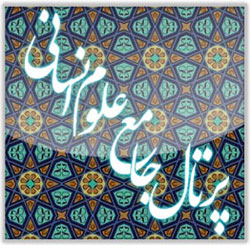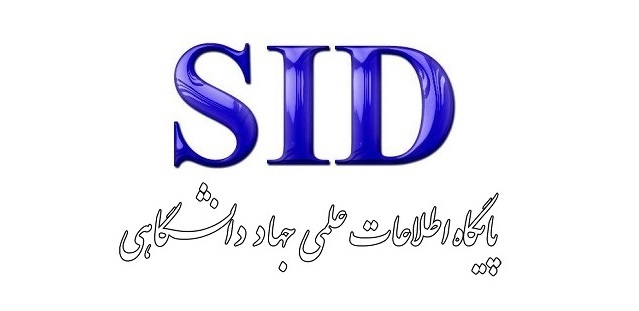Explaining the Smart Housing Model in Baghdad for Energy Consumption Optimization
Keywords:
Architecture, Smart Building, Smart Housing, Energy, BaghdadAbstract
The aim of this study is to develop and explain a smart housing model in Baghdad to optimize energy consumption using advanced technologies. This survey-based research follows a quantitative approach. Key smart housing components were identified through a literature review, and a custom-designed questionnaire was distributed among 200 participants (residents and urban development experts) in Baghdad’s Al-Mansour and Al-Jadriya districts. Data were analyzed using LISREL software and structural equation modeling. Instrument reliability was confirmed using Cronbach’s alpha, and construct validity was statistically supported. The results revealed four main factors influencing smart housing perception: the psychological factor had the greatest impact (factor loading = 0.71), including aspects of security and peace of mind. The environmental factor (loading = 0.62) emphasized energy efficiency and green space integration. The economic factor (loading = 0.59) reflected the importance of reduced maintenance costs and advanced materials. The physical factor (loading = 0.53) had the least influence, involving building design and infrastructure components. All factors were statistically significant (t-values > 1.96). The final model indicates that psychological and environmental components play a stronger role in shaping user perceptions of smart housing than physical or economic factors. Therefore, policymakers and urban planners should prioritize psychological well-being and ecological sustainability in smart housing initiatives.
Downloads
References
1. Mir U, Abbasi U, Mir T, Kanwal S, Alamri S. Energy management in smart buildings and homes: current approaches, a hypothetical solution, and open issues and challenges. IEEE Access. 2021;9:94132-48.
2. Aliero MS, Qureshi KN, Pasha MF, Jeon G. Smart Home Energy Management Systems in Internet of Things networks for green cities demands and services. Environmental Technology & Innovation. 2021.
3. Ejidike CC, Mewomo, Modupe Cecilia. Benefits of adopting smart building technologies in building construction of developing countries: review of literature. SN Applied Sciences. 2023;5(2):52.
4. Karimi Z, Kahkrand SH, Dehghan M. Investigating Impact of Baghdad Urban Structure on the Health of its Inhabitants during the (first) Period of the Abbasid Caliphate. Tarīkh-i Pizishkī (Medical History). 2022;14(47):e35.
5. Al-Rawi N. Baghdad Neighborhoods: Processes of Resilience against the Internally-reflected Conflict of 2006-2008. 2019.
6. Iqbal A, Ullah F, Anwar H, Kwak KS, Imran M, Jamal W, et al. Interoperable Internet-of-Things platform for smart home system using Web-of-Objects and cloud. Sustainable Cities and Society. 2018;38:636-46.
7. Chen T-C, Dwijendra NKA, Singhal S, Sivaraman R, Mamdouh A. Intelligent System Application to Monitor the Smart City Building Lighting. Computers Materials & Continua. 2023;75(2):3159-69.
8. Sittón-Candanedo I, Alonso RS, García Ó, Muñoz L, Rodríguez-González S. Edge Computing, IoT and Social Computing in Smart Energy Scenarios. Sensors. 2019;19(15):3353.
9. Filho PG, Villas LA, Gonc¸alves VP, Pessin G, Loureiro AA, Ueyama J. Energy-efficient smart home systems: Infrastructure and decision-making process. Internet of Things. 2019;5:153-67.
10. Kasemayi E, Varmaghani H. Factors Affecting Energy Consumption Reduction in Buildings: A Case Study of High-rise Buildings in District 22, Tehran. Iranian Energy Journal. 2021;23(1).
11. Kazemi Pouran Badr S, Daneshjou F, Masoumi Haghighi A, Shayanfar M. Investigating the Impact of Building Management Systems and Insulation on Reducing Energy Consumption in Residential Buildings. Scientific Journal of Structural Engineering and Construction. 2020;7(2):5-23.
12. Mashayekhi HR, Alavi SA, Qaed Rahmati S. Analysis of smart indicators in reducing the physical vulnerability of urban housing (case study: District 1 of Tehran). Geography and Development of Urban Space. 2019;6(1):185-206.
13. Naemati R, Hasanzadeh M, Maleki M. Use of Modern Technologies in Smart Buildings with Emphasis on Social Welfare. Elite Journal of Science and Engineering. 2018;3(3):48-66.
14. Amiri G. An Analytical Perspective on the Influence of Iranian Islamic Arts on Iraq (Case Study: Abbasid Era). Islamic Art. 2020;17(40):430-44.
15. Mojtabavi SM, Bonanjad Mashhadi B. Investigating the Impact of Smart Building Technology on Energy Saving. Modern Architectural Research. 2022;2(4).
16. Mohammadi Y, Shokouri Ganjavi H, Kazemi A. A Fuzzy Multi-objective Optimization Model for Managing Production and Consumption in Smart Microgrids. Energy. 2021.
17. Tayebi M. Smart Buildings: A Step Towards Smart Cities. Tehran: Zarrin Andishmand Publishing; 2020.
18. Honarvar J, Haghighi S. Review of Smart Building Technology with Emphasis on Modern Architectural Technologies for Energy Reduction. Shabak. 2021;7(2):53.
19. Teubner RA, Stockhinger J. Literature review: Understanding information systems strategy in the digital age. Strategic Information Systems. 2020;29(4).
20. Yu J, Zhang N. Development of a Comprehensive Urban Resilience Assessment Framework: The Intersection of Smart Buildings and Disaster Mitigation. 2024.
21. Panchalingam R, Chan KC. A state of the art review on artificial intelligence for Smart Buildings. Intelligent Buildings International. 2019:1-24.
22. Gado NG. AI Revolutionizes Construction Management "Building Smarter, Safer, and Efficiently Addressing Industry Challenges". Engineering Research Journal. 2024;183(3):330-44.
23. Hasena MM, Abaasa ZR, editors. The Challenges of Smart Development in Future Iraqi Cities: Achieving Techno-Sustainability. 3rd International Conference on Sustainable Engineering Techniques (ICSET 2020); 2020.
24. Al-Kamoosi MQA-A. The Future Initiatives of Smart Communities in Baghdad as a Smart City. Al-Nahrain Journal for Engineering Sciences. 2019;22(4):259-76.
25. Zafarmandi S, Amirjamshidi M, Sanaei A. Application of Smart Materials in Interactive Architectural Design (Case Study: Smart Buildings in Tehran). Journal of Modern Research in Geographical Sciences, Architecture, and Urbanism. 2021:32-51.
26. Sheikhi Nashalji M, Mahdizadeh Seraj F. Designing a Smart Sunshade for Office Buildings to Control Direct Sunlight Based on Cooling Load Reduction Inspired by Iranian-Islamic Patterns. Modern Architectural Research. 2022;2(1).
27. Ghadiri Moghadam M, Vaziri H, Sanaeian H, Rashid Kalavi H. Evaluation of Static Energy Systems (Trombe Wall and Greenhouse Effect) on Building Energy Consumption in Cold Climates. Iranian Architecture and Urbanism. 2019:25-36.
Downloads
Published
Submitted
Revised
Accepted
Issue
Section
License
Copyright (c) 2025 Zuhair Dahham Naser (Author); Seyed Mohammad Reza Miralaie; Mahmoud Teimouri (Author)

This work is licensed under a Creative Commons Attribution-NonCommercial 4.0 International License.









